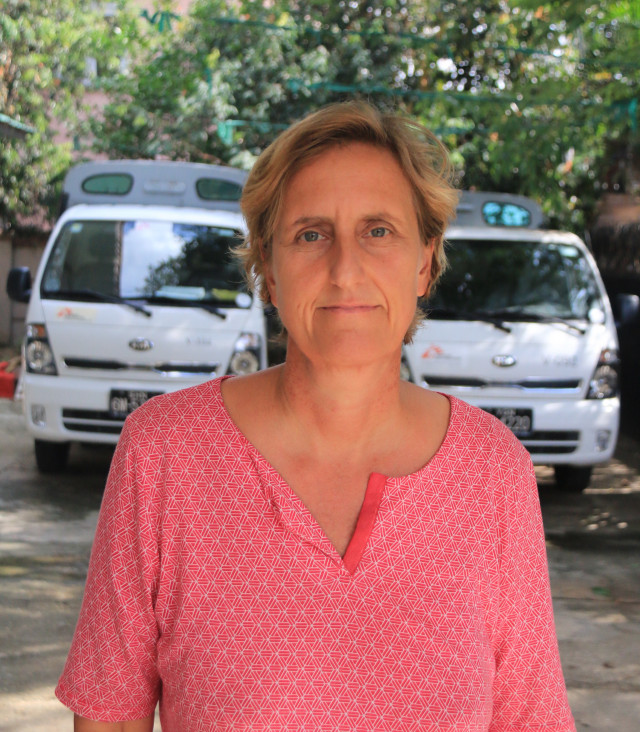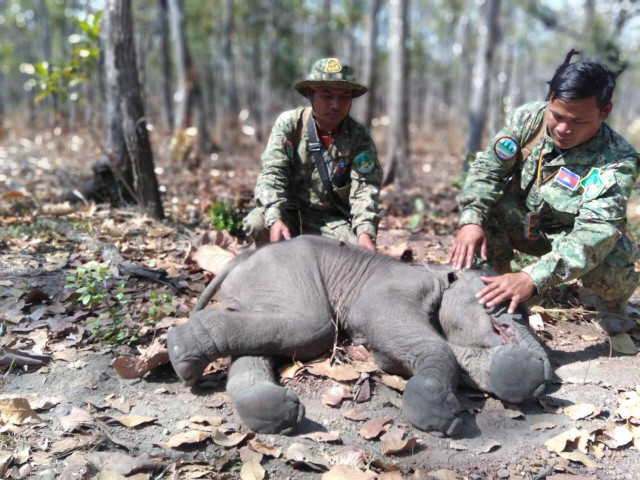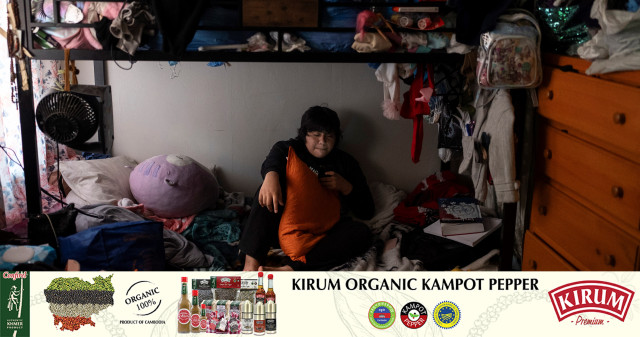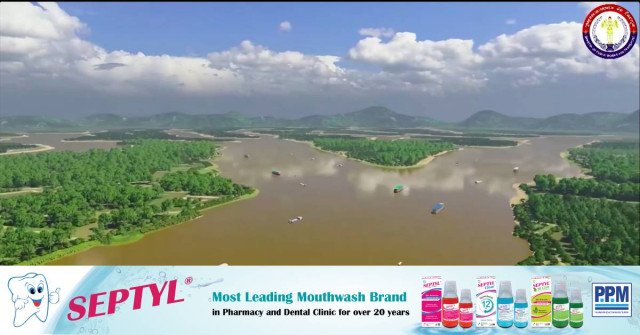Myanmar: "The Situation Could Become Critical In Weeks"

- By Johanna Son / Reporting ASEAN
- July 23, 2021 3:52 PM
The COVID-19 pandemic in Myanmar is an emergency that is unfolding swiftly and is much, much worse than what we know at the moment.
“With facilities overrun, oxygen supplies limited and vaccine rollout stalled, the situation could become critical in the coming weeks,” Marjan Besuijen, head of mission of Medecins Sans Frontieres (MSF) in Myanmar, said in this conversation with Reporting ASEAN’s founder and editor, Johanna Son.
These rising numbers for new cases and deaths since late June 2021 have now become far more than just statistics on a chart. They represent the heavy - and still-increasing - human toll brought by COVID-19 in Myanmar, a pandemic whose damage has been turbo-charged by the crumbling of the government and health system since the Feb 1 military coup.
Reporting ASEAN: Given MSF’s knowledge and experience in Myanmar, what is the pandemic situation like?
Marjan Besuijen: With daily cases now reaching 5,000, the third wave of COVID-19 is here in Myanmar. But it is difficult to know the full extent of the situation because testing is still not at the level it should be – a positivity rate of 35 per cent from the roughly 15,000 daily tests suggests that infections are more widespread than the data currently reveals. Until this can be ramped up to provide clearer data on the situation, there cannot be a comprehensive overview.
We do surveillance for potential cases in our clinics too, and we are seeing more potential cases that need to be isolated and referred.
Q: It’s looking like an unfolding disaster. Myanmar has also seen the collapse of its health system after the coup. What are its biggest challenges?
Marjan: We are worried about access to healthcare. This includes procurement, medical supply chains, cashflow amid the shutdown of the banking sector, the collapse of the public health system, and how all of the above will severely impact the already shrinking availability and accessibility of healthcare for people most in need of it. This third wave of COVID-19 will compound all these issues, stretching already scant public health services, pushing more people into poverty as the economy takes another hit, further limiting movement of goods and people, and causing the avoidable deaths of many individuals across the country.
Myanmar desperately needs a comprehensive and coordinated pandemic response, including surveillance, treatment and vaccines, with involvement from multiple levels of society. It needs secure supply channels, cash to be available and to give access to humanitarian organisations to respond to areas where needs are greatest.
Q: What is the space left for humanitarian work? Some protesting doctors are trying to do what they can outside the system, with ‘underground’ facilities or helping people online. Can non-state initiatives make progress?
Marjan: The COVID-19 outbreak has reached the vast majority of the country. A nationwide COVID-19 response is beyond the scope of the humanitarian sector – Myanmar desperately needs a comprehensive and coordinated pandemic response, including surveillance, treatment and vaccines, with involvement from multiple levels of society.
Doctors and nurses trying to work outside the system, for example, in underground clinics, are facing attacks and detention from the military government that further impedes access to healthcare. But while these non-state initiatives are undoubtedly helpful, they are nonetheless fragmented and lacking the coordination and capacity necessary to make significant progress against the outbreak.
Q: Could you describe the capacity of the health system, post-February?
Marjan: Eighty percent of Myanmar’s healthcare services are provided through the public system, and this is now operating at a fraction of its capacity. Many hospitals and clinics are closed as a result of the military seizing power and medical staff joining the civil disobedience movement. Those that are open typically cannot offer all services. People are having to travel much further to get treatment or else pay for private clinics, which for many are unaffordable.
The government’s HIV/AIDS and tuberculosis programmes have been barely operational since February. MSF has seen over 3,000 of the patients from these programmes return to our clinics, and we have again started diagnosing and treating around 400 new HIV patients who can no longer get tested and treated in the public system, many of whom have advanced infections.
Q: How has the civil disobedience movement affected the health sector and the pandemic response, vaccine willingness? Some see non-vaccination as a form of protest.
Marjan: Just before the military seized power, the vaccination campaign had begun, with some medical staff getting their first doses. It was widely reported that after 1 February many did not go back for their second and others were refusing to be vaccinated by a regime they deem illegitimate. There was a batch of vaccines that were due to expire in May and at one point anyone over 18 could walk into one of the vaccination centres to receive the jab because the uptake was so low – you didn’t need to be in a high-risk group.
The impact of this faltered campaign is now being seen. What’s more, with many health workers on strike, even when vaccines become available again in Myanmar, the de facto government may be lacking the human resources willing to administer them.
Q; While the case figures in the WHO data and other global dashboards are being still added to, the vaccination statistics stopped at early June. What does this reflect?Even if under-reported, the statistics are showing a clear pickup, and this seems to be a bad sign?
Marjan: We can’t speak about the reliability of the statistics, but what we do know is that testing is not at the levels it should be so the data being released will be a vast underestimate of the total number of cases. The key figures are the percentage positivity rate, which at 35% is very high, and the fact that the record daily numbers for cases and deaths are being broken nearly every day. There is a clear pick-up, but it will be worse than the data reveals.
Q: Given that the nastier variants are there and even other countries are having a hard time, how does the picture in Myanmar look?
Marjan: With facilities overrun, oxygen supplies limited and vaccine rollout stalled, the situation could become critical in the coming weeks. In some places such as Sittwe in Rakhine State, there is nowhere to get tested. Many hospitals in Yangon are no longer able to take COVID-19 positive patients.
If the military had not have seized power, many more people would have been vaccinated, and there would be a functioning healthcare system to test suspected cases, quarantine those infected and treat those who need it.
Q: Are we looking at multiple health disasters? What are the impacts on HIV treatment and management, children’s vaccination. What are the biggest worries?
Marjan: Our biggest worries are about access to healthcare. This includes procurement, medical supply chains, cashflow amid the shutdown of the banking sector, the collapse of the public health system, and how all of the above will severely impact the already shrinking availability and accessibility of healthcare for people most in need of it.
This third wave of COVID-19 will compound all these issues, stretching already scant public health services, pushing more people into poverty as the economy takes another hit, further limiting movement of goods and people, and causing the avoidable deaths of many individuals across the country.
We are worried about how the interruption to tuberculosis and HIV treatment will wipe out years of progress to tackle these conditions. The number of people on antiretroviral therapy increased from 40,128 in 2011 to 146,826 at the end of 2017. AIDS-related deaths fell by 52% between 2000 and 2016. If people are unable to adhere to their antiretroviral treatment, much of this progress will be lost.















